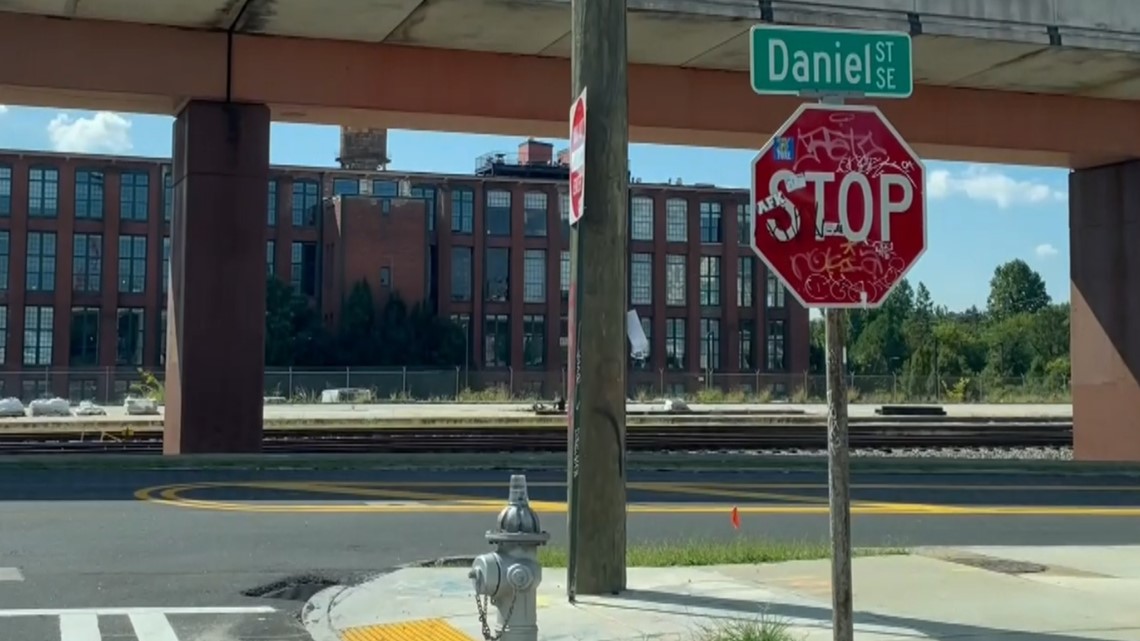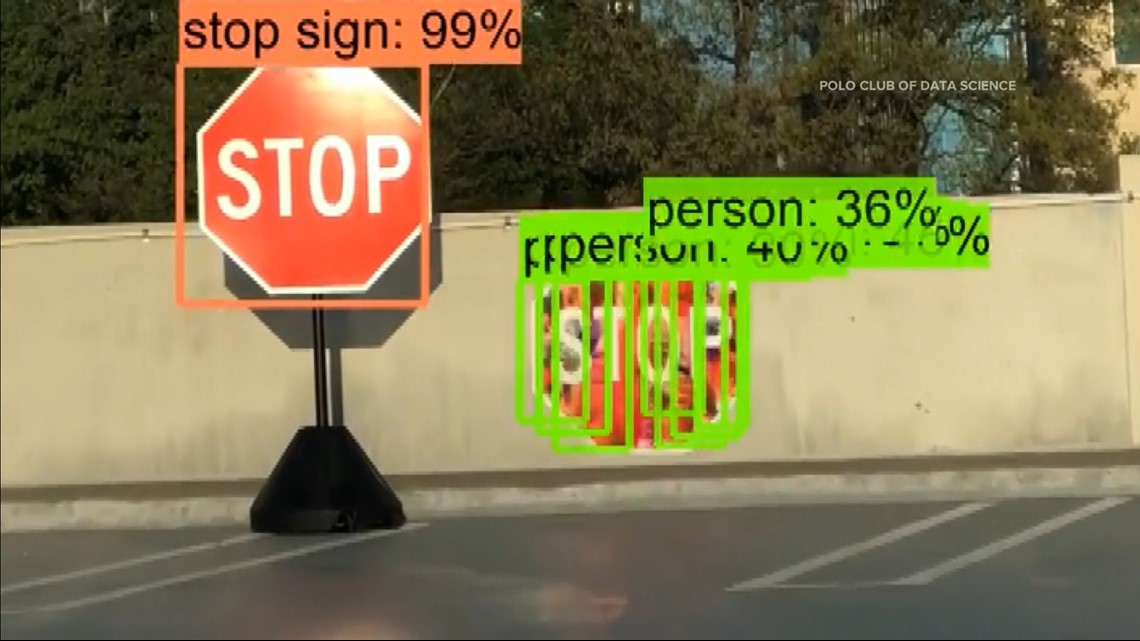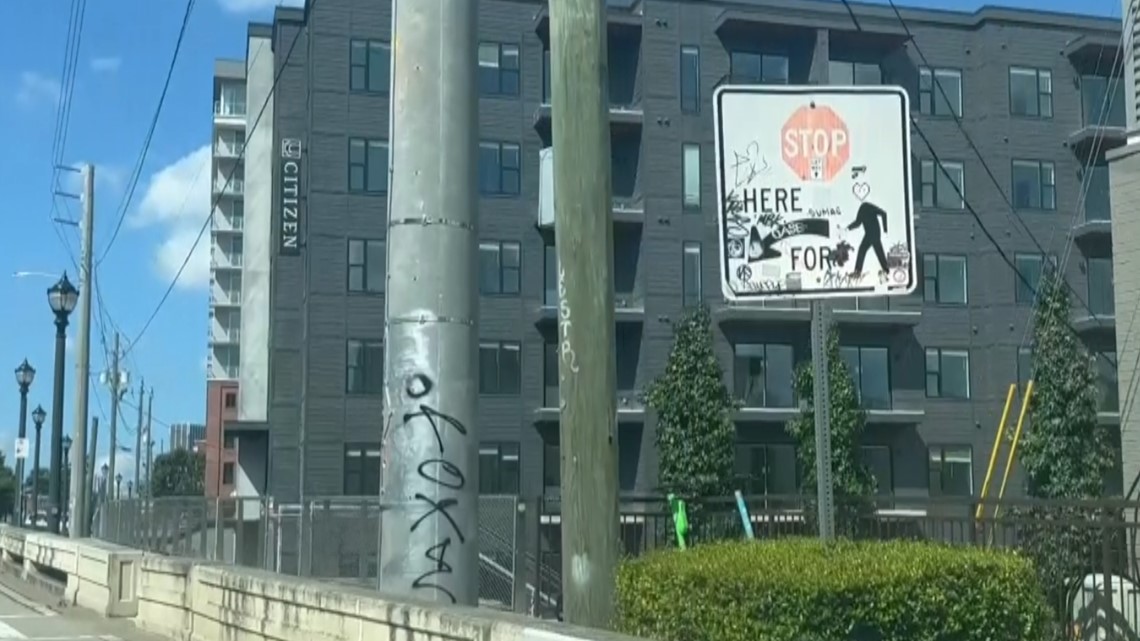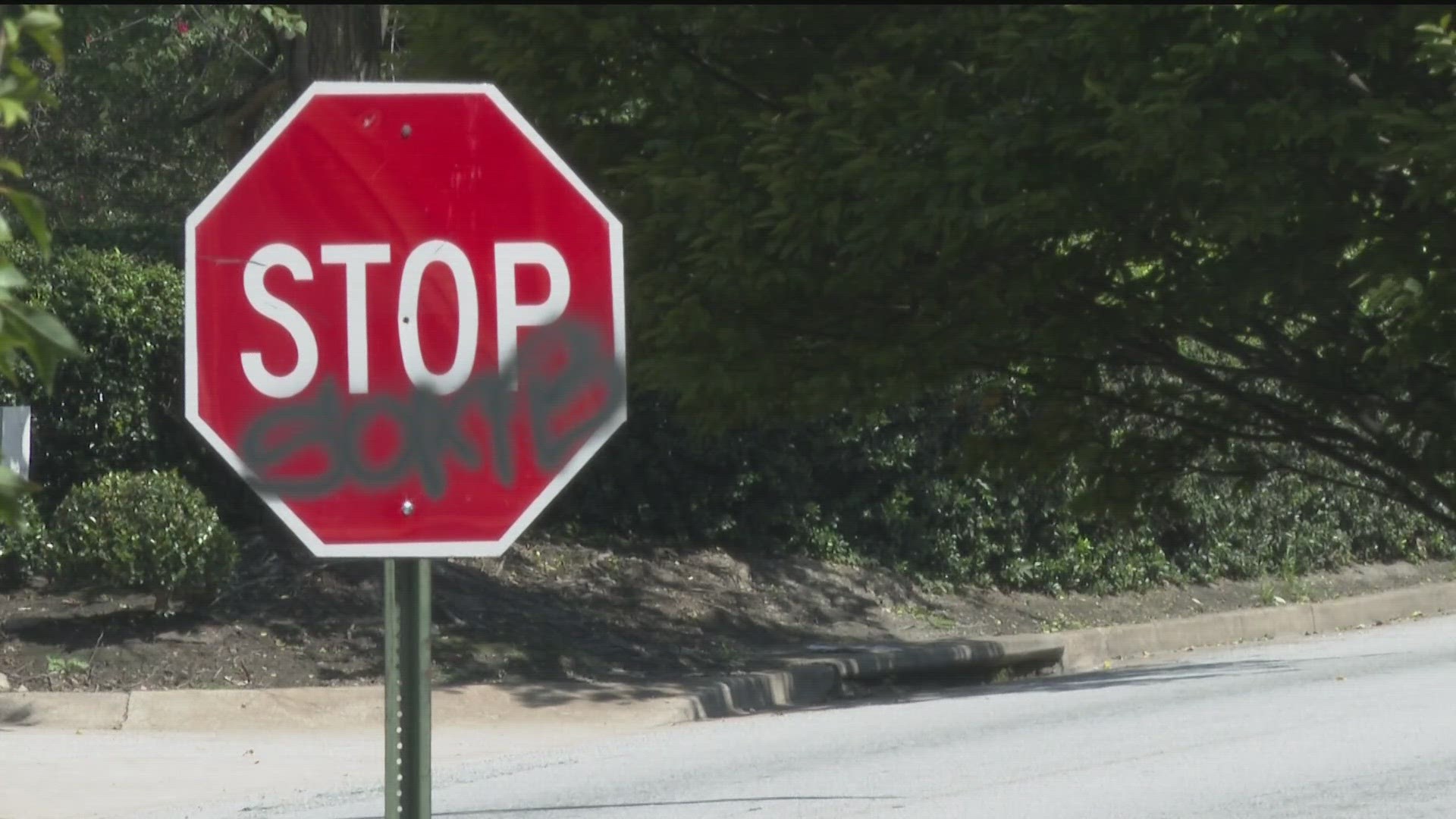ATLANTA — Some Atlanta drivers and city leaders are concerned after research found road signs that have been tagged with graffiti could confuse self-driving cars.
As more self-driving cars hit Atlanta-area roads, it's an issue experts say needs to be addressed. Companies like Cruise, Beep, and Clevon have all chosen the metro to early launch and test their tech.
In one study, titled Robust Physical-World Attacks on Deep Learning Visual Classification, graffiti caused the autonomous vehicle technology to read a stop sign as a 45 miles per hour sign.


In another study, the researchers noted during several different tests, the network did not properly identify a stop sign, which could potentially lead to a crash at an intersection.
“What random graffiti can potentially give you is that the model might completely miss the sign or not recognize the sign at all," said Amir Rahmati, Assistant Professor in the Department of Computer Science at Stony Brook University.
Rhamati was on the research team that published one of the initial studies in 2018.
“We came up with various types of manipulations that you can do to alter these signs," he said. "We have examples of the car driving by and recognizing a stop sign as a speed limit sign, for example."
Georgia Tech researchers did similar tests with examples posted to the Polo Club of Data Science's YouTube channel.
In the videos, the viewer can see the technology read a tagged stop sign as a bird, a sports ball, and even a person.


"If you block the letters that's very effective at fooling it,” explained Kevin Eykholt, another researcher who performed the experiments. "By the time it gets close enough to recognize the stop sign, it may not be able to break in time."
Eykholt recalled how it didn't take much to fool the technology.
“At first, we thought it was going to be very difficult to do," he explained. "We found surprisingly that we didn't have to make the changes to be very colorful; Just simple black and white stickers was surprisingly effective at causing it to flip its decisions. By the time it corrected, it was too late.”
In the last year, City of Atlanta crews were dispatched more than 200 times to remove graffiti from traffic signs.
Still, it remains a common sight across Atlanta, as the city serves as a test drive city for autonomous vehicles.
Self-driving vehicles from the San Francisco-based company Cruise will soon be tested out in metro Atlanta, according to a report from 11Alive's media partner, the Atlanta Business Chronicle.
A company spokesperson told 11Alive Cruise has built "many redundancies" into their technology to ensure safety, saying:
In addition to a robust set of multi-modal sensors, our vehicles also utilize high-definition city/road mapping within our areas of operation that help us perceive the features of any street scene. This way, our vehicles will still be able to heed to a road sign that is obstructed by graffiti.
Clevon, which introduced its Autonomous Robot Carrier (ARC) technology to Peachtree Corners' Curiosity Lab in August 2023, also addressed the concern. In a statement to 11Alive, a spokesperson said:
In addition to live detection of street signs, [the ARCs] are also pre-mapped, and therefore, the signs can be identified even if they are covered with graffiti. Moreover, a teleoperator always supervises the ARCs and can take over the driving remotely to assist the ARC if it cannot assess the situation.
Experts agree not all graffiti will fool every vehicle, thanks to fail-safes like GPS and sensors that can be used as backup if the cameras fail or get confused.


"Fortunately the autonomous vehicles right now do not solely rely on cameras to detect like road signs or intersections," Rhamati explained. "So even if their camera failed to notice that the stop sign that has been manipulated by the graffiti, hopefully, the GPS data that they have and maybe other readings will tell them that, 'Okay, I know for a fact that there should be a stop sign or a light at this intersection.'"
Still, researchers say concerns raised by these studies should be addressed before the city leans into self-driving technology.
“If we naively start to use them across the board without really thinking about these security challenges, then these systems can become vulnerable," Rhamati said.
In a 2018 report, the Atlanta Regional Commission explained how the city might plan for the future of autonomous vehicle technology.
In 2017, the ARC brought together 300 local government and transportation officials for the region’s first ConnectATL summit to hear from national experts and consider the implications for communities, infrastructure, and the workforce.
"The new technology will bring challenges," the report stated. "To have it work well, metro Atlanta will require a seamless technology that spans the region – sensors in roads, 'smart' traffic signals, and secure IT systems to handle data."
But it's unclear how much of that has been implemented. In a statement, an ATLDOT spokesperson said, "ATLDOT has not allocated resources or personnel to address the use of autonomous vehicles on the City of Atlanta’s roadways."
Eykholt said while it's important for local government leaders to stay ahead of safety concerns, the onus will primarily fall on the automakers to improve their technology to better adapt.
“Cleaning up the signs and stuff is fine, but I think a lot of the safety and security comes on the people producing the actual technology to enforce," he said.

